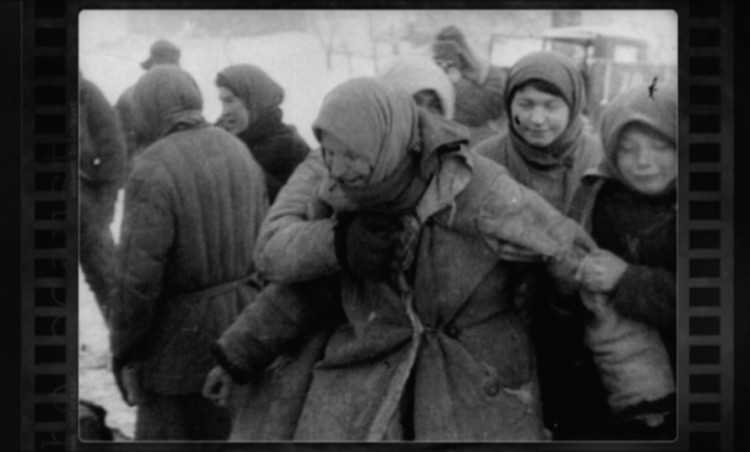
Seventy years after the Nazi death camps were finally closed, new footage has emerged to show the Holocaust started earlier than we thought.
While we often think of the camp system as a killing machine of gas chambers at places like Auschwitz, the new film shows Germany was killing on this scale much earlier.
Now, a two-hour TV special, with footage from the Soviet Film Archives never seen before in the West, reveals the true extent of the horrors before what we know as the Holocaust.
“We all think we know about the Holocaust, about Nazi concentration camps liberated by the Allies at the end of the war,” say the programme makers.
“But there was another side to the killing, one that is rarely seen or talked about in the West. On the Eastern Front, hundreds of thousands of innocent people were shot and buried in mass graves.
“Now, as a result of newly-discovered footage, their story can be told. Some of it is so harrowing that it simply cannot be broadcast, but what can be seen drives home the brutality of the Nazi occupation.”
A professor of history travelled from Britain to Russia to see the footage.
“What Doctor Jeremy Hicks saw took his breath away, when he visited the Russian State Archive in 2006. He learned that locked away, there was unseen footage from the Russian Front,” added the programme makers.
The historian himself was sickened, but believes it must be seen to educate us about what really happened back then.
“It shows that the Holocaust wasn’t just about industrialised killing,” says Dr Hicks, a Russian Film Historian. People actually came face-to-face with the perpetrators.
“This footage opens a new chapter, and it is truly shocking, so it was not an easy decision to show it you will be shocked when you watch it, but it is important that you do.
“It took me a week to get through a film of an hour and a half. It really shocked me. These are the earliest films of the Holocaust, the initial stage, the mass killing by bullets. This preceded the construction of the camps, the gas chambers and crematoria.”
Hour upon hour of footage will teach historians that despite us thinking of the Holocaust as mainly camps, there had already been a “bullet Holocaust” across the Soviet Union.
The films are only available because Russian cameramen and women followed the Red Army into battle and recorded everything that went on. They hoped to capture heroic victories, but they also had their cameras running as their troops uncovered what the Nazis had done.
The Jewish population and others were forced to dig their own graves before being shot, while children were thrown in still alive, to save bullets. Shown in cinemas around Russia, some early footage was not much more than propaganda, but when they started showing the Unseen Holocaust, rage understandably spread quickly. Little wonder, then, that the Red Army was so merciless when the soldiers finally reached the concentration camps and Berlin itself.
The Unseen Holocaust is on the H2 Channel on Sunday, January 26, at 9pm.

Enjoy the convenience of having The Sunday Post delivered as a digital ePaper straight to your smartphone, tablet or computer.
Subscribe for only £5.49 a month and enjoy all the benefits of the printed paper as a digital replica.
Subscribe